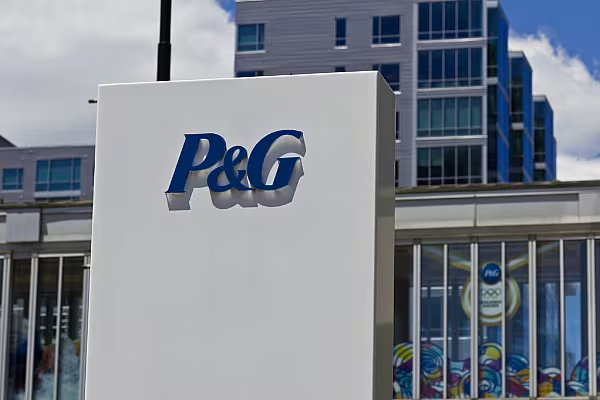Is Procter & Gamble missing out?
News that Unilever overpaid shelled out $1 billion to buy Dollar Shave Club raises the question: Why wasn't it P&G that snapped up the online subscription upstart, which virtually created the online razor market by drawing in more than 3 million annual subscribers?
After all, P&G commands around 60 percent of the men's razor and blade market, according to Euromonitor. That's down from 71 percent in 2010, a year before Dollar Shave Club launched. Euromonitor says Dollar Shave Club had 5 percent of the market last year. Meanwhile, P&G's year-over-year revenues have dropped every quarter since 2013.
The maker of Tide detergent and Gillette razor blades was caught off guard by Dollar Shave Club's success, according to an article this week in the The Wall Street Journal, which cited anonymous sources. P&G's Gillette brand later launched its own online shave club, but not until 4 years later.
Perhaps it's because P&G has been maniacally focused on slimming down its brand portfolio. That leaves less time and fewer resources to chase growth opportunities. After all, if the company's best deal folks are focused on selling off brands, then who is minding what's coming down the pike?
P&G in 2014 said it would shed around 100 product lines with the idea it could use the cash to invest in developing more products. That year, it sold Duracell to Warren Buffett's Berkshire Hathaway for $4.7 billion and most of its pet-food business to Mars for $2.9 billion. In 2015 P&G sold its beauty business to Coty for $12.5 billion. In total, it's been a seller in 16 deals since April 2014, according to Bloomberg data that tracks deals which are publicly announced.
The last time P&G was on the acquisition side of a deal was in 2012. Over the past decade, it has picked up a few brands here and there, but P&G's last big bet was its $57 billion acquisition of Gillette in 2005.
While there have been some reports of P&G bidding for deals, such as Trojan condom maker Church & Dwight, nothing solid has emerged. Meanwhile, competitors Unilever, Henkel, Coty, J&J, and L'Oreal have been snapping up popular brands across the consumer goods spectrum.
So what has P&G been doing with the proceeds of its many sales? Much of it is in cash, of which it has about $14 billion on its balance sheet, up from $4.4 billion in 2012. As for investing more in current brands? It spent about $2 billion on research and development in 2015, the same amount as in 2014.
Still, P&G has continued to boost its dividends, a welcome sign for investors yearning for yield. While P&G's shares have moved broadly in step with the S&P 500 -- they are up 6 percent, in the last two years, compared to a 10 percent rise in the S&P 500 -- its 3 percent dividend yield has helped give investors a total return of 13 percent during that time.
P&G has also been using much of its excess cash to buy back shares. It plans to spend $8 billion to $9 billion on stock buybacks in 2016.
Those moves might be keeping shareholders happy, but they could distract from building a stronger business for the long term. Sure, shedding poor-performing businesses and shoring up a more focused brand portfolio are good moves. But instead of just fixing past mistakes, P&G should spend more time looking ahead -- before it misses out on another billion-dollar opportunity.
This column does not necessarily reflect the opinion of Bloomberg LP and its owners.
News by Bloomberg, edited by ESM. To subscribe to ESM: The European Supermarket Magazine, click here.














